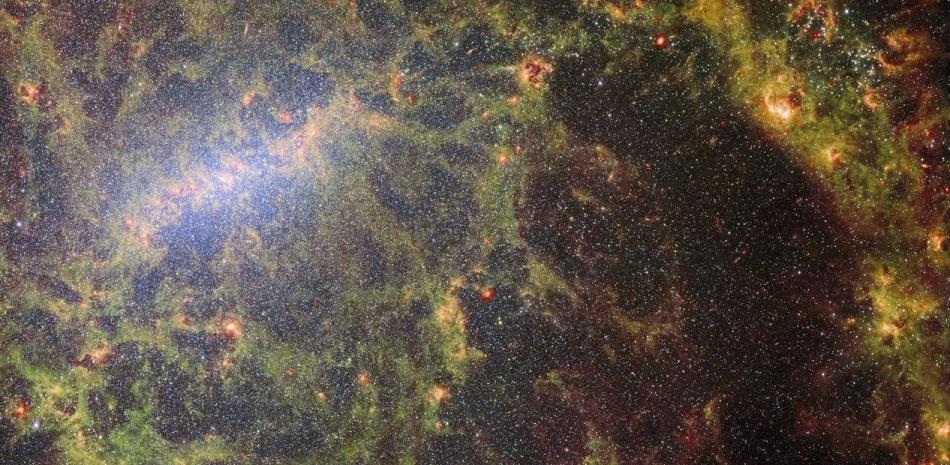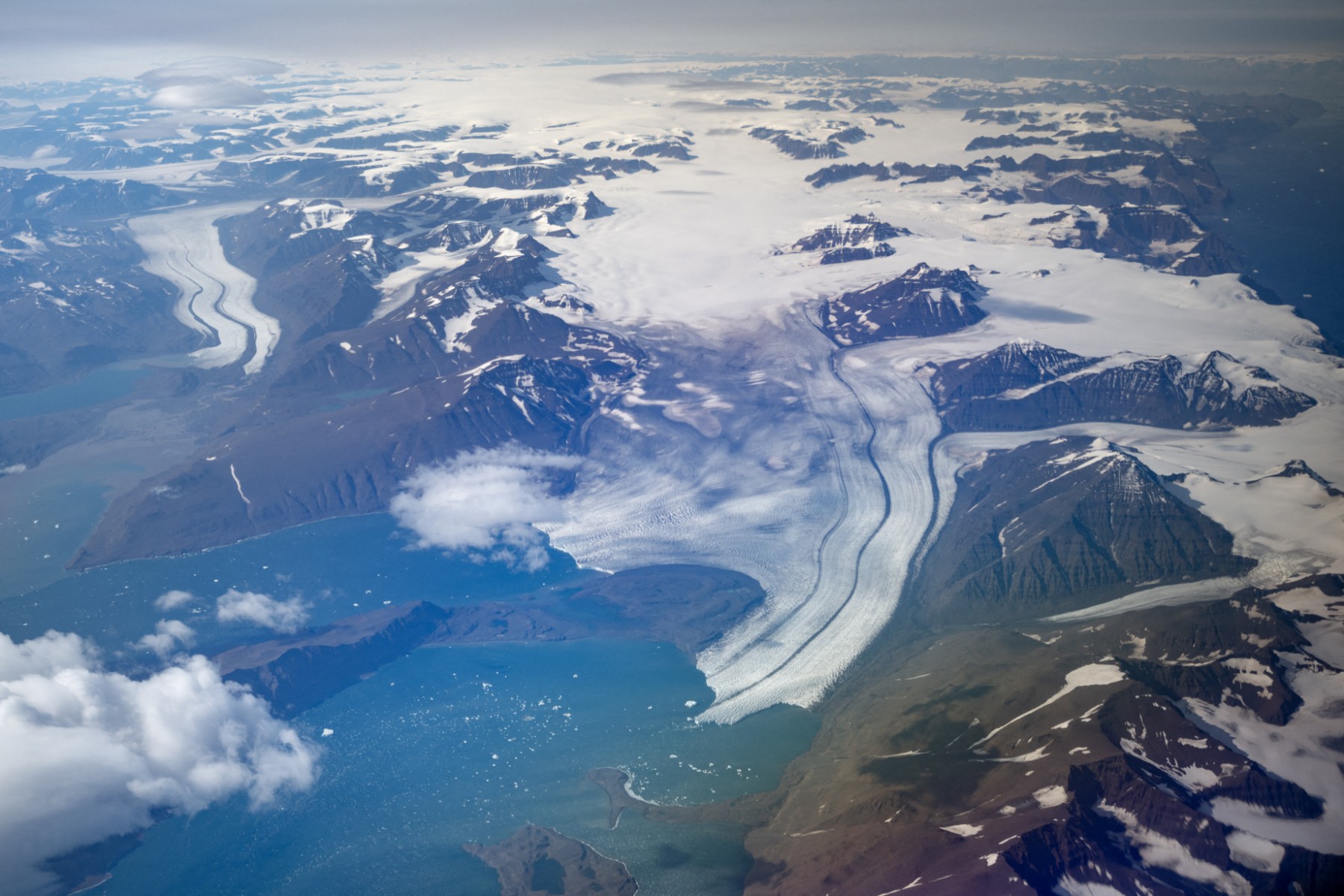NASA has released a surprising discovery on Mars that is attracting everyone's attention. spaceship OdysseyKnown as the longest trip ever to orbit Mars, it has completed its hundredth return to the Red Planet. To commemorate this achievement, the mission team shared An impressive panoramic view of Mount Olympus, the highest volcano in the solar system. This image, taken in March, stands out for its stunning clarity and detail and offers A new perspective on the vast Martian landscape.
Mount Olympus, located near the equator of Mars, It stretches 600 kilometers at its base and rises 27 kilometers into the sky. This month, astronomers found out A morning coat The frost that temporarily covers the volcano's summit is a phenomenon that provides new clues about the circulation of ice from the poles in the dry Martian environment.
According to NASA, the latest image of Mount Olympus reveals A blue-white stripe indicates the presence of dust In the Martian atmosphere at the time of capture. Additionally, a thin purple layer suggests a mixture of atmospheric dust with water ice clouds. At the top edge of the image, the blue-green band indicates the location of ice clouds that rise up to 30 miles into the Martian sky, the scientists explain.
NASA shared capture of Mount Olympus.
A panoramic view of Mount Olympus
To get this amazing panorama, scientists operated the spacecraft Odyssey A slow spin allows its camera to zoom in on the Martian horizon. This method is similar to what astronauts on the International Space Station use to capture views of Earth, but in this case, it gives us A unique perspective of Mount Olympus.
Jeffrey PlattOdyssey project scientist at the Jet Propulsion Laboratory (JPL) in California explained: “We typically see Mount Olympus In narrow strips from above, but by turning the spacecraft towards the horizon, The height of the volcano can be seen in a picture On the Terrain of Mars.” The film is not only visually stunning but also provides invaluable scientific data.
Conquest of Mount Olympus.
By capturing images of Mars at different times of the year, scientists can analyze it How the planet's atmosphere varies during its four seasons, which last four to seven months each. These types of studies are critical to better understanding atmospheric and climate processes on Mars.
Read more
The most recent image of Mount Olympus is not an isolated feat, but The result of prolonged study and learning. It all started in 2008, when NASA's Phoenix mission landed on Mars. Odyssey, acting as a communications link between the Phoenix lander and Earth, had the opportunity to test its camera toward the Martian horizon.
Steve Saunders, a spacecraft operations engineer at Lockheed Martin Space, recalled: “We decided to turn on the camera and see how it looks. “Based on those experiments, we designed an array that would keep the camera's field of view centered on the horizon as we orbited the planet.”
The Odyssey mission, launched in April 2001 and managed by the Jet Propulsion Laboratory (JPL), represents NASA's rescue story. Following the failures of the Mars Climatic Orbiter in 1998 and the Mars Polar Lander in 1999, Odyssey marked the first success in 21st century Mars exploration.
Odyssey, which entered orbit in October 2001, has been instrumental in detecting deposits of water ice beneath the Martian surface, a key resource for sending future humans. In addition, the study mapped extensive areas of the planet, including craters, that provide valuable data on the geological history of Mars.





:quality(85)/cloudfront-us-east-1.images.arcpublishing.com/infobae/KTKFKR763RBZ5BDQZJ36S5QUHM.jpg)